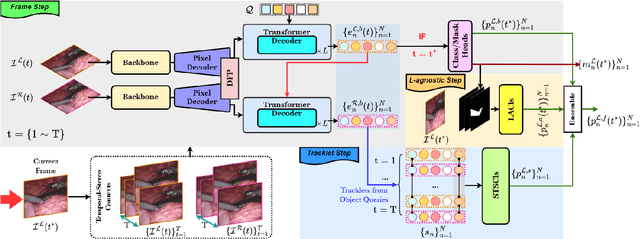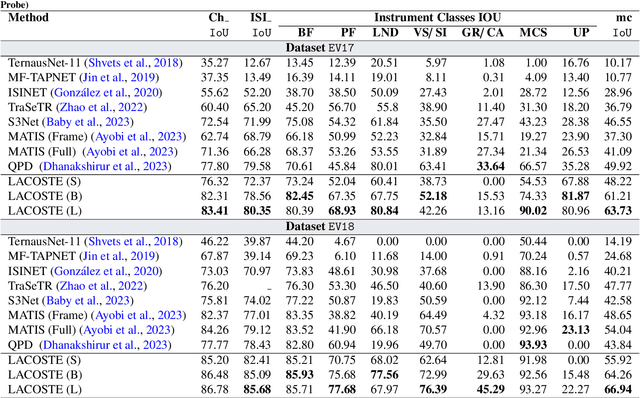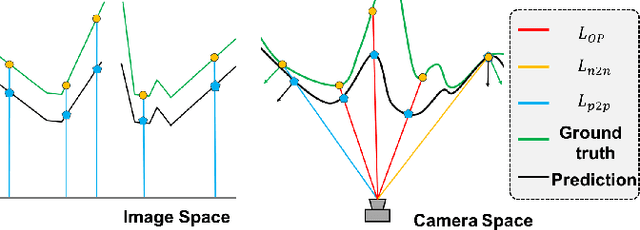S Kevin Zhou
Path Pooling: Train-Free Structure Enhancement for Efficient Knowledge Graph Retrieval-Augmented Generation
Mar 07, 2025Abstract:Although Large Language Models achieve strong success in many tasks, they still suffer from hallucinations and knowledge deficiencies in real-world applications. Many knowledge graph-based retrieval-augmented generation (KG-RAG) methods enhance the quality and credibility of LLMs by leveraging structure and semantic information in KGs as external knowledge bases. However, these methods struggle to effectively incorporate structure information, either incurring high computational costs or underutilizing available knowledge. Inspired by smoothing operations in graph representation learning, we propose path pooling, a simple, train-free strategy that introduces structure information through a novel path-centric pooling operation. It seamlessly integrates into existing KG-RAG methods in a plug-and-play manner, enabling richer structure information utilization. Extensive experiments demonstrate that incorporating the path pooling into the state-of-the-art KG-RAG method consistently improves performance across various settings while introducing negligible additional cost. Code is coming soon at https://github.com/hrwang00/path-pooling.
Identify Critical KV Cache in LLM Inference from an Output Perturbation Perspective
Feb 06, 2025Abstract:Large language models have revolutionized natural language processing but face significant challenges of high storage and runtime costs, due to the transformer architecture's reliance on self-attention, particularly the large Key-Value (KV) cache for long-sequence inference. Recent efforts to reduce KV cache size by pruning less critical entries based on attention weights remain empirical and lack formal grounding. This paper presents a formal study on identifying critical KV cache entries by analyzing attention output perturbation. Our analysis reveals that, beyond attention weights, the value states within KV entries and pretrained parameter matrices are also crucial. Based on this, we propose a perturbation-constrained selection algorithm that optimizes the worst-case output perturbation to identify critical entries. Evaluations on the Needle-in-a-Haystack test and Longbench benchmark show our algorithm enhances state-of-the-art cache eviction methods. Further empirical analysis confirms that our algorithm achieves lower output perturbations in over 92% attention heads in Llama model, thereby providing a significant improvement over existing methods.
FRAG: A Flexible Modular Framework for Retrieval-Augmented Generation based on Knowledge Graphs
Jan 17, 2025



Abstract:To mitigate the hallucination and knowledge deficiency in large language models (LLMs), Knowledge Graph (KG)-based Retrieval-Augmented Generation (RAG) has shown promising potential by utilizing KGs as external resource to enhance LLMs reasoning.However, existing KG-RAG approaches struggle with a trade-off between flexibility and retrieval quality.Modular methods prioritize flexibility by avoiding the use of KG-fine-tuned models during retrieval, leading to fixed retrieval strategies and suboptimal retrieval quality.Conversely, coupled methods embed KG information within models to improve retrieval quality, but at the expense of flexibility.In this paper, we propose a novel flexible modular KG-RAG framework, termed FRAG, which synergizes the advantages of both approaches.FRAG estimates the hop range of reasoning paths based solely on the query and classify it as either simple or complex.To match the complexity of the query, tailored pipelines are applied to ensure efficient and accurate reasoning path retrieval, thus fostering the final reasoning process.By using the query text instead of the KG to infer the structural information of reasoning paths and employing adaptable retrieval strategies, FRAG improves retrieval quality while maintaining flexibility.Moreover, FRAG does not require extra LLMs fine-tuning or calls, significantly boosting efficiency and conserving resources.Extensive experiments show that FRAG achieves state-of-the-art performance with high efficiency and low resource consumption.
LACOSTE: Exploiting stereo and temporal contexts for surgical instrument segmentation
Sep 14, 2024



Abstract:Surgical instrument segmentation is instrumental to minimally invasive surgeries and related applications. Most previous methods formulate this task as single-frame-based instance segmentation while ignoring the natural temporal and stereo attributes of a surgical video. As a result, these methods are less robust against the appearance variation through temporal motion and view change. In this work, we propose a novel LACOSTE model that exploits Location-Agnostic COntexts in Stereo and TEmporal images for improved surgical instrument segmentation. Leveraging a query-based segmentation model as core, we design three performance-enhancing modules. Firstly, we design a disparity-guided feature propagation module to enhance depth-aware features explicitly. To generalize well for even only a monocular video, we apply a pseudo stereo scheme to generate complementary right images. Secondly, we propose a stereo-temporal set classifier, which aggregates stereo-temporal contexts in a universal way for making a consolidated prediction and mitigates transient failures. Finally, we propose a location-agnostic classifier to decouple the location bias from mask prediction and enhance the feature semantics. We extensively validate our approach on three public surgical video datasets, including two benchmarks from EndoVis Challenges and one real radical prostatectomy surgery dataset GraSP. Experimental results demonstrate the promising performances of our method, which consistently achieves comparable or favorable results with previous state-of-the-art approaches.
Long-tailed multi-label classification with noisy label of thoracic diseases from chest X-ray
Nov 29, 2023Abstract:Chest X-rays (CXR) often reveal rare diseases, demanding precise diagnosis. However, current computer-aided diagnosis (CAD) methods focus on common diseases, leading to inadequate detection of rare conditions due to the absence of comprehensive datasets. To overcome this, we present a novel benchmark for long-tailed multi-label classification in CXRs, encapsulating both common and rare thoracic diseases. Our approach includes developing the "LTML-MIMIC-CXR" dataset, an augmentation of MIMIC-CXR with 26 additional rare diseases. We propose a baseline method for this classification challenge, integrating adaptive negative regularization to address negative logits' over-suppression in tail classes, and a large loss reconsideration strategy for correcting noisy labels from automated annotations. Our evaluation on LTML-MIMIC-CXR demonstrates significant advancements in rare disease detection. This work establishes a foundation for robust CAD methods, achieving a balance in identifying a spectrum of thoracic diseases in CXRs. Access to our code and dataset is provided at:https://github.com/laihaoran/LTML-MIMIC-CXR.
Rethinking Semi-Supervised Medical Image Segmentation: A Variance-Reduction Perspective
Feb 07, 2023Abstract:For medical image segmentation, contrastive learning is the dominant practice to improve the quality of visual representations by contrasting semantically similar and dissimilar pairs of samples. This is enabled by the observation that without accessing ground truth label, negative examples with truly dissimilar anatomical features, if sampled, can significantly improve the performance. In reality, however, these samples may come from similar anatomical features and the models may struggle to distinguish the minority tail-class samples, making the tail classes more prone to misclassification, both of which typically lead to model collapse. In this paper, we propose ARCO, a semi-supervised contrastive learning (CL) framework with stratified group sampling theory in medical image segmentation. In particular, we first propose building ARCO through the concept of variance-reduced estimation, and show that certain variance-reduction techniques are particularly beneficial in medical image segmentation tasks with extremely limited labels. Furthermore, we theoretically prove these sampling techniques are universal in variance reduction. Finally, we experimentally validate our approaches on three benchmark datasets with different label settings, and our methods consistently outperform state-of-the-art semi- and fully-supervised methods. Additionally, we augment the CL frameworks with these sampling techniques and demonstrate significant gains over previous methods. We believe our work is an important step towards semi-supervised medical image segmentation by quantifying the limitation of current self-supervision objectives for accomplishing medical image analysis tasks.
BoxPolyp:Boost Generalized Polyp Segmentation Using Extra Coarse Bounding Box Annotations
Dec 07, 2022Abstract:Accurate polyp segmentation is of great importance for colorectal cancer diagnosis and treatment. However, due to the high cost of producing accurate mask annotations, existing polyp segmentation methods suffer from severe data shortage and impaired model generalization. Reversely, coarse polyp bounding box annotations are more accessible. Thus, in this paper, we propose a boosted BoxPolyp model to make full use of both accurate mask and extra coarse box annotations. In practice, box annotations are applied to alleviate the over-fitting issue of previous polyp segmentation models, which generate fine-grained polyp area through the iterative boosted segmentation model. To achieve this goal, a fusion filter sampling (FFS) module is firstly proposed to generate pixel-wise pseudo labels from box annotations with less noise, leading to significant performance improvements. Besides, considering the appearance consistency of the same polyp, an image consistency (IC) loss is designed. Such IC loss explicitly narrows the distance between features extracted by two different networks, which improves the robustness of the model. Note that our BoxPolyp is a plug-and-play model, which can be merged into any appealing backbone. Quantitative and qualitative experimental results on five challenging benchmarks confirm that our proposed model outperforms previous state-of-the-art methods by a large margin.
3D endoscopic depth estimation using 3D surface-aware constraints
Mar 04, 2022



Abstract:Robotic-assisted surgery allows surgeons to conduct precise surgical operations with stereo vision and flexible motor control. However, the lack of 3D spatial perception limits situational awareness during procedures and hinders mastering surgical skills in the narrow abdominal space. Depth estimation, as a representative perception task, is typically defined as an image reconstruction problem. In this work, we show that depth estimation can be reformed from a 3D surface perspective. We propose a loss function for depth estimation that integrates the surface-aware constraints, leading to a faster and better convergence with the valid information from spatial information. In addition, camera parameters are incorporated into the training pipeline to increase the control and transparency of the depth estimation. We also integrate a specularity removal module to recover more buried image information. Quantitative experimental results on endoscopic datasets and user studies with medical professionals demonstrate the effectiveness of our method.
 Add to Chrome
Add to Chrome Add to Firefox
Add to Firefox Add to Edge
Add to Edge